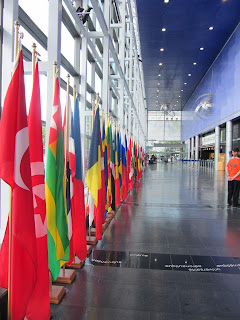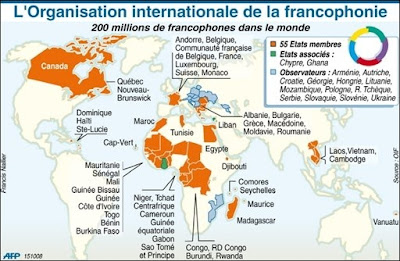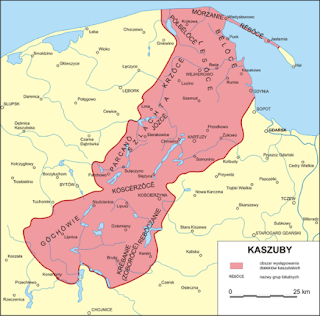 |
| Flags of francophone countries (Wikimedia Source) (Organisation internationale de la francophonie) |
French can be used in France, Canada, Switzerland, Belgium, Luxembourg, Monaco and various countries in and many other parts of the world. Speaking French in a state where French is one of the official state languages will provide as many opportunities and exposure to speaking the language as English in the United States. Native speakers of English, let’s be honest: it would also be difficult to speak contemporary English, and even understand British and American culture, without taking the long history of influence from French into consideration.
The other reason why learning French is a good idea is what I will call here ‘international appeal’. French is widespread around the world. The Agence Universitaire de la Francophonie is a network made up of 630 French language universities and over 350 French faculties worldwide, for a total of 120,000 professors and researchers (Fatunde 2012). In India, for instance, where universities are motivated by economic gain (Fatunde 2012), individuals who study French desire to be translators and bilingual secretaries for Francophone companies operating in India. Professor Raufu Adebisi of Ahmadu Bello University in Zaria, for instance, claims that the appeal of the French language in India is comparably high to its appeal anywhere else in African, including Nigeria, his home country. In fact, he claimed that most Anglophone countries in the southern hemisphere need bilingual employees to work for French companies as well (Fatunde 2012).
 |
| (Image Source) (Current members and status) |
How did French become so widespread, one might ask? And that is a long story that the French themselves like to tell…
It is well-known that the official state language of France did not start out as a widely-shared local language. During the French Revolution, at the end of the 18th century for instance, 75% of French citizens did not speak French as a mother tongue (Fatal 2010). In fact, before the 19th century, French was utilized more in the Netherlands and Germany as a vehicular language of scientific communication than in some areas of France (Fatal 2010). Fast forward a century or so and the global spread of the French language has surpassed all but two other international vehicular languages in the world: English and Spanish. While this spread can be attributed to colonization and war, one important fact is that over twenty percent of Francophone speakers, including students and teachers, reside outside of francophone countries. As an official language, French is only second to English. Thus the international appeal of the French language is enormous and despite major setbacks has not faded since its emergence in the late 17th century.
The number of French speakers has tripled since 1945 and this growth has not stifled ever since (Fatal 2010). The Organisation Internationale de la Francophonie estimated that the number of French speakers will rise to over 700 million by 2050 (FMFAID 2017), a growth fueled by economic and cultural expansion. France and other French-speaking countries play an active role in the world economy, accounting for some 20% of world trade in goods (FMFAID 2017).
Being a francophone is an advantage on the job market, as well. French companies exist all over the world with headquarters in North America, Africa, and Europe. France’s economy alone is the fifth largest economy in the world (FMFAID 2017). Additionally, the French language is an official language of the United Nations, the European Union, NATO, and countless other international organizations giving it control over global governance. France is a key economic partner for any country that seeks economic and political success.
 |
| Information on news organization France 24 (Image Source) |
In today’s world, French culture is known for its gastronomy, high fashion, and arts. Many of the greatest literary works, from authors like Victor Hugo and Molière, have been written in French. Since French culture is highly influential, it is no wonder that the language can be appealing to learn. I think it is safe to assume that the international appeal of French will not fade anytime soon. Not in English, for sure! Everyone with any English language ability knows that some phrases can simply not be translated directly to English, so we use them in French. Just like that! Déjà vu? Yes! Un je ne sais quoi that we cannot forget…
Happy International Francophonie Day 2018
Sources cited:
Fatal, H. (2010, June 6). 20 Surprising Fact About French Language. Retrieved April 08, 2017, from http://www.antimoon.com/forum/t16740.html.
Fatunde, T. (2012, August 5). The expansion of the French language lies in Africa - University World News. Retrieved April 08, 2017, from http://www.universityworldnews.com/article.php?story=20120801162231952.
French Ministry of Foreign Affairs and International Development, 2017. The status of French in the world. Retrieved April 08, 2017, from http://www.diplomatie.gouv.fr/en/french-foreign-policy/francophony/the-status-of-french-in-the-world/.
French Ministry of Foreign Affairs and International Development. (2017). 10 good reasons for learning French. Retrieved April 08, 2017, from http://www.diplomatie.gouv.fr/en/french-foreign-policy/francophony/promoting-french-around-the-world-7721/article/10-good-reasons-for-learning.
“International tourism on track for a record year”, UNWTO World Tourism Barometer
http://media.unwto.org/press-release/2017-11-06/international-tourism-track-record-year
Vigouroux, C. B. (2008). "The smuggling of La Francophonie": Francophone Africans in Anglophone Cape Town (South Africa). Language In Society, 37(3), 415-434. doi:10.1017/S0047404508080561.
---
When she wrote this text in 418 ‘Language and Minorities in Europe’ at the University of Illinois in spring 2017, Tanairy Delgado was a senior in Global Studies. She was planning on working for an international nonprofit organization after graduation and interested in applying to Law School in the future.











